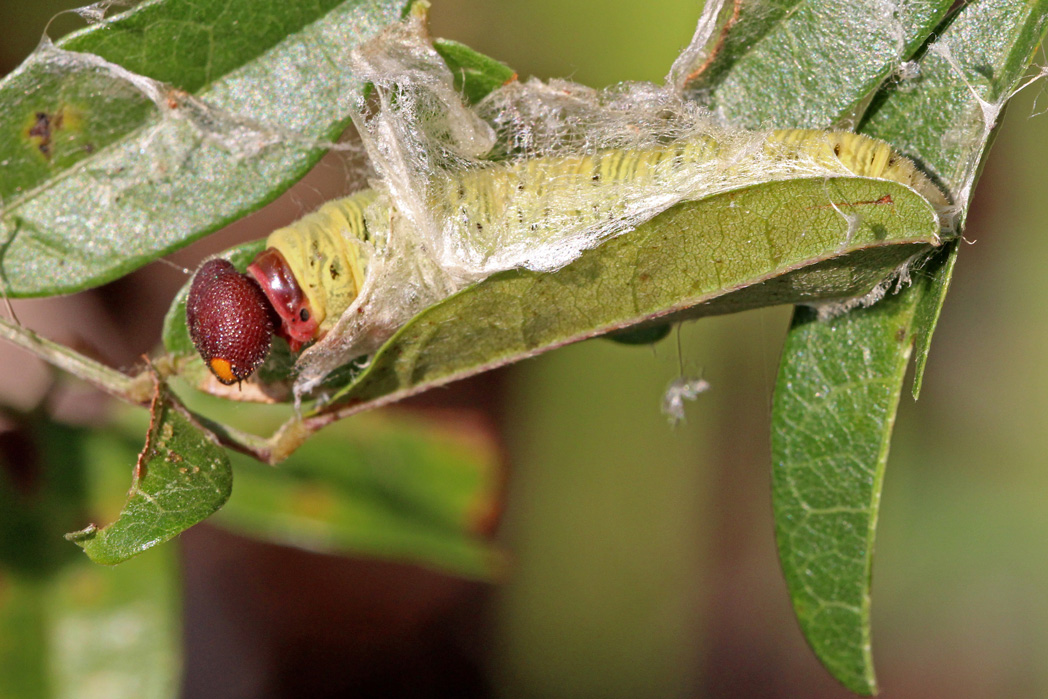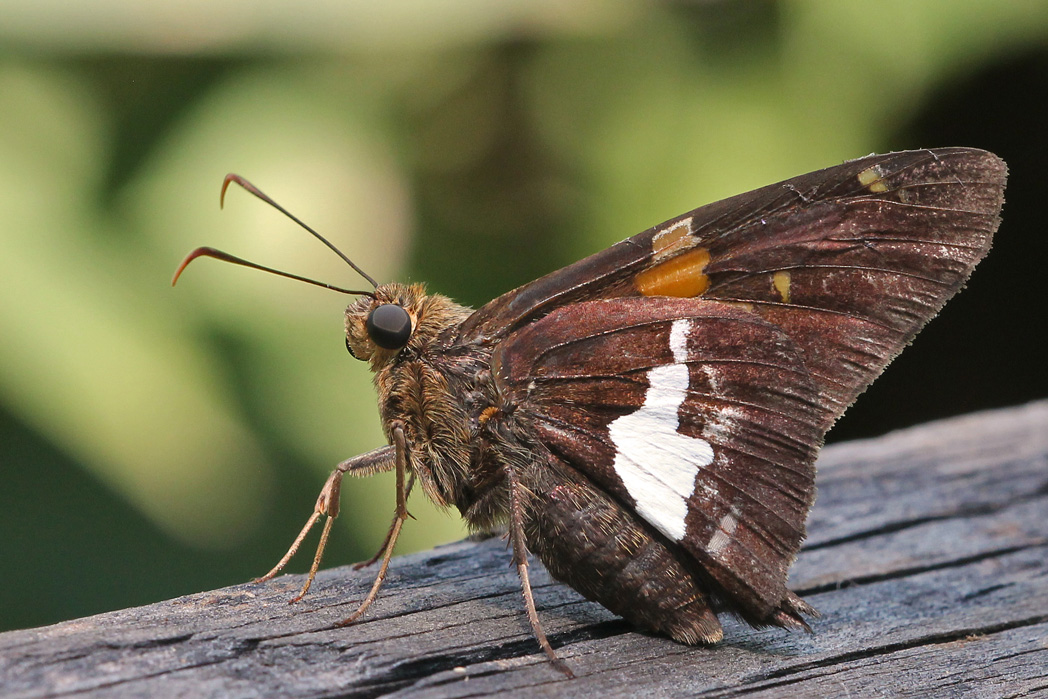Silver-spotted skipper
“Know your native pollinators” is a series of articles that will help you identify and appreciate Florida’s varied pollinators, including bees, wasps, butterflies, moths, beetles, flies, birds and bats. Pictured above: Silver-spotted skipper by Mary Keim.
You might find one of these creatures hanging upside-down, but it’s not a bat (or a vampire). It’s a Silver-spotted skipper!
CLASSIFICATION
Order: Lepidoptera
Family: Hesperiidae
Subfamily: Pyrginae
Genus species: Epargyreus clarus
FORAGING PREFERENCES
Silver-spotted skipper caterpillars feed on herbs, vines, shrubs and trees in the pea (Fabaceae) family such as False indigo (Amorpha fruticosa), American hogpeanut (Amphicarpaea bracteata), Atlantic pigeonwings (Clitoria mariana), Groundnut (Apios americana), Elliott’s milkpea (Galactia elliottii) and American wisteria (Wisteria frutescens). Adults are drawn to a variety of flowering plants for nectar, but prefer blue, red, pink and purple flowers. Favorites include Swamp milkweed (Asclepias incarnata), Buttonbush (Cephalanthus occidentalis), Dense gayfeather (Liatris spicata) and Purple thistle (Cirsium horridulum). Skippers will occasionally feed on mud and even animal feces.

Silver-spotted skipper larva in leaf shelter by Mary Keim.
IDENTIFICATION
The Silver-spotted skipper is one of the largest, most widespread and recognizable skippers. It has a quick jerky flight that is typical of skippers. Its wings are 1 3/4 – 2 5/8 inches long and brown to almost black with a dashed white wing fringe. The forewing has transparent gold spots visible on both sides. The hindwing of the butterfly is lobed and the underside has a metallic silver band which often looks like a large white spot, hence its common name. The antennae on this butterfly are slightly curved at the tip.
HABITAT
Silver-spotted skippers are common and can be found from northern Mexico to southern Canada, as well as most of the continental United States. In the West, they are absent from the Great Basin and West Texas, restricting themselves to more mountainous areas. You can find Silver-spotted skippers throughout Florida. The species is secure globally, but may be rare in some parts of its range.
Silver-spotted skippers enjoy a disturbed habitat, open woods, foothills, streamsides, prairie waterways, edges of forests, swamps, brushy areas and other open areas with nectar plants.
LIFE CYCLE
In the South, the Silver-spotted skipper produces three to four broods from February until December. Two broods are common from May until September in most of the East, and only one brood is produced in the North and West. Woody, and sometimes herbaceous, legumes are the popular host for the larvae of these butterflies. Females lay single eggs that are green with a red top.
Caterpillars are two inches in length. They have a yellow abdomen with darker transverse stripes and spots. The head of the caterpillar is a dark reddish brown with large yellow eye patches. Prolegs are bright orange. During development, larvae create a shelter out of a folded leaf. They will leave shelters only to feed or make larger shelters. Older caterpillars string leaves together with silk thread to create their leaf nests. This leaf shelter also acts as protection for the pupa. The overwintering pupa stage is dark brown with black and white markings.
References:
- Hall, Donald W. “Common Name: Silver spotted skipper.” Featured Creatures. University of Florida. June 2011.
- Kelly and Thomas Naberhaus, coordinators. 2017. Butterflies and Moths of North America. 2019.
- “Silver-spotted Skipper (Epargyreis clarus).” Insect Identification for the Casual Observer. 2019.

